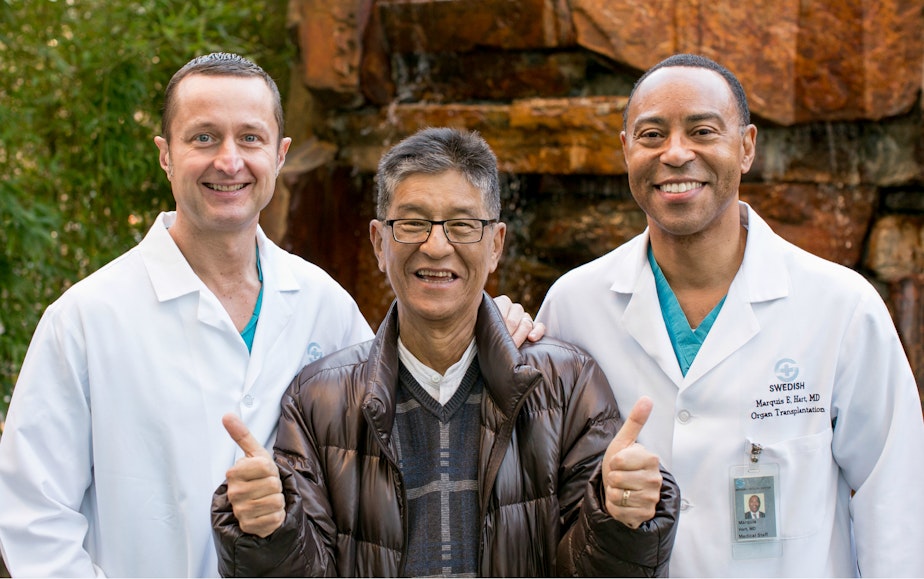Demand For Organs To Grow As Hep C, Obesity Increase

Nearly 10,000 Americans got organ transplants this year. They’re the lucky ones; there are more than 10 times that number waiting for an organ. That gap between supply and demand is only expected to grow.
Don Elliget received his liver transplant seven months ago at Swedish Medical Center. His surgeon, Dr. Marquis Hart, checks to see how he’s been doing since. Hart tells Elliget he looks fantastic.
“Are you getting back to your normal self, a little bit?” he asks.
“Yup,” Elliget says with a big smile, “and doing a little more exercise and checking off all the honey-do list!”
Elliget is 63 years old. He had Hepatitis C, although he didn’t know it at the time. But he felt it: His energy was low, and he tired easily. Three years ago, a biopsy confirmed his liver was deteriorating. Elliget says it was hard to take in the news.
Sponsored
“I couldn’t grasp how serious it was,” he says. He remembers the doctor explaining the progression of the disease. “He says, ‘Well, it goes to cirrhosis and then from cirrhosis it goes to cancer and then after cancer, you’re gone.’”
Thing did get serious. One time he collapsed and went into a coma for nine days. Elliget would have a few more medical episodes before he was placed on an organ transplant wait list. He would be competing with a growing number of patients needing an organ.
Hart is lead transplant surgeon at Swedish Medical Center. He says demand for liver transplants has gone up over the years, in part because of the rise in Hepatitis C cases. There were 119 liver transplants in Washington state in 2014; currently there are 260 on the wait list.
But there’s another looming problem that’s driving the next wave of liver demand: obesity. Obesity often causes non-alcoholic fatty liver disease. “The care of these patients is extremely complex,” Hart says, “and the patients are often extremely fragile.”
There are national and regional rules on organ transplants. The wait varies, depending different factors, Hart says.
Sponsored
“For kidneys, [it’s] based on how long they’ve been on dialysis, and what their blood type is.” The wait for a kidney transplant could take up to five years.
It’s a little different for liver transplants, Hart says.
“Livers are allocated according to acuity,” he says. “The sicker patients who are at higher risk of dying … get transplanted first so that they don’t die while waiting for an organ.”
But they don’t always get one. On average about 22 people die each day waiting for an organ.
This week Swedish opens a new organ transplant center on First Hill. The center houses the different transplant specialists and related services in one place. Patients like Don Elliget come here for his follow up appointments. Today he has more energy, and his appetite is back.
Sponsored
Elliget says two years ago he didn’t know what was going to happen. All he knew was that without a new liver he was going to die. Since his transplant in January, he thinks about the young man whose liver keeps him alive.
“In reality, I’m living two lives—my own, and the other guy’s liver that’s part of me now.”
Correction 7/29/2015: An earlier version of this story misspelled Don Elliget's name.

